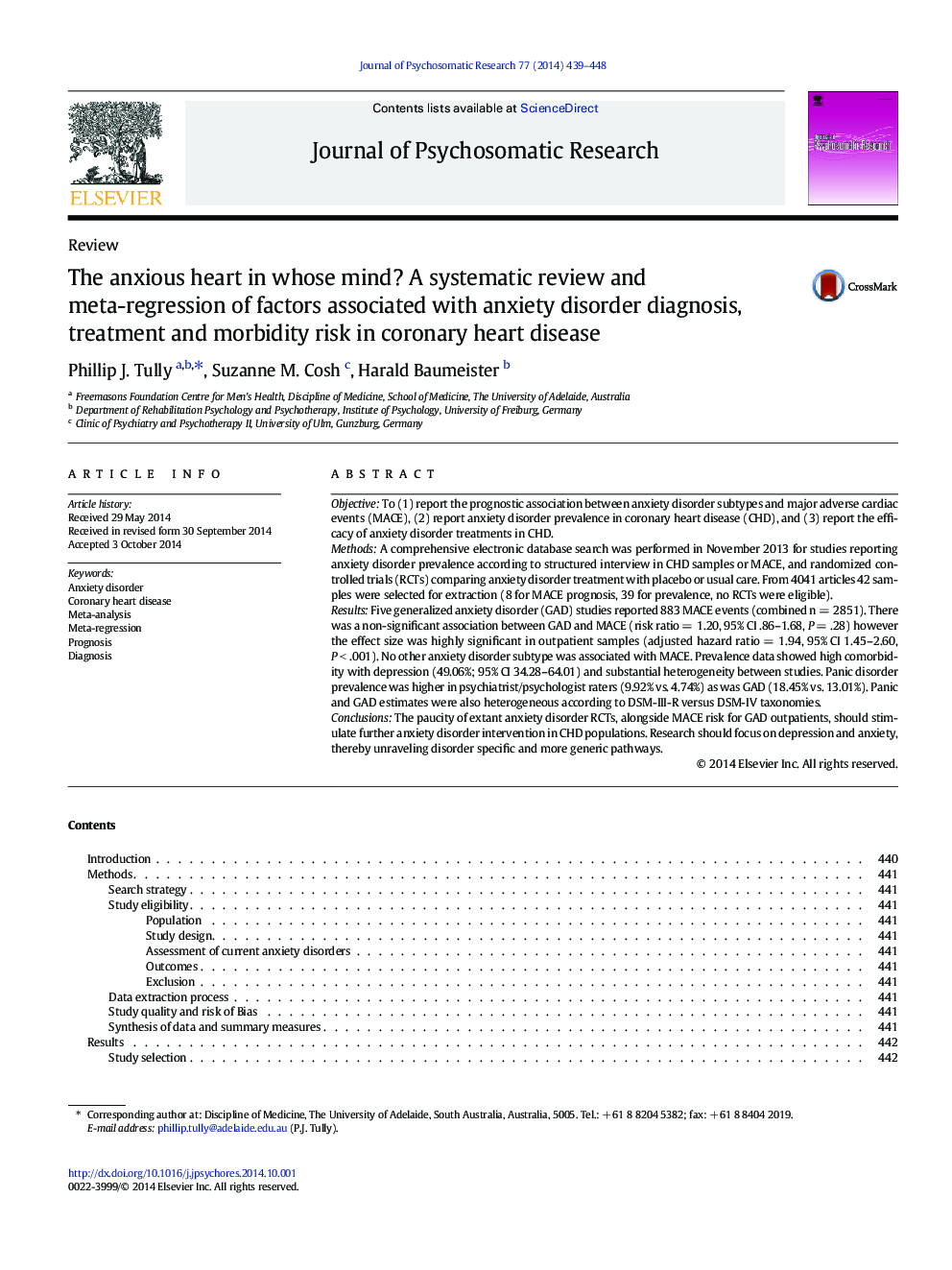| کد مقاله | کد نشریه | سال انتشار | مقاله انگلیسی | نسخه تمام متن |
|---|---|---|---|---|
| 949434 | 926751 | 2014 | 10 صفحه PDF | دانلود رایگان |
• Prevalence of anxiety disorder subtypes is reported in CHD.
• Anxiety disorder prevalence differs according to methodological characteristics.
• Generalized anxiety disorder increases the risk for MACE in outpatients.
• Other anxiety disorder subtypes did not increase MACE risk.
• No RCT for anxiety disorder has been reported in CHD.
ObjectiveTo (1) report the prognostic association between anxiety disorder subtypes and major adverse cardiac events (MACE), (2) report anxiety disorder prevalence in coronary heart disease (CHD), and (3) report the efficacy of anxiety disorder treatments in CHD.MethodsA comprehensive electronic database search was performed in November 2013 for studies reporting anxiety disorder prevalence according to structured interview in CHD samples or MACE, and randomized controlled trials (RCTs) comparing anxiety disorder treatment with placebo or usual care. From 4041 articles 42 samples were selected for extraction (8 for MACE prognosis, 39 for prevalence, no RCTs were eligible).ResultsFive generalized anxiety disorder (GAD) studies reported 883 MACE events (combined n = 2851). There was a non-significant association between GAD and MACE (risk ratio = 1.20, 95% CI .86–1.68, P = .28) however the effect size was highly significant in outpatient samples (adjusted hazard ratio = 1.94, 95% CI 1.45–2.60, P < .001). No other anxiety disorder subtype was associated with MACE. Prevalence data showed high comorbidity with depression (49.06%; 95% CI 34.28–64.01) and substantial heterogeneity between studies. Panic disorder prevalence was higher in psychiatrist/psychologist raters (9.92% vs. 4.74%) as was GAD (18.45% vs. 13.01%). Panic and GAD estimates were also heterogeneous according to DSM-III-R versus DSM-IV taxonomies.ConclusionsThe paucity of extant anxiety disorder RCTs, alongside MACE risk for GAD outpatients, should stimulate further anxiety disorder intervention in CHD populations. Research should focus on depression and anxiety, thereby unraveling disorder specific and more generic pathways.
Journal: Journal of Psychosomatic Research - Volume 77, Issue 6, December 2014, Pages 439–448
